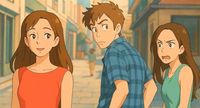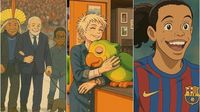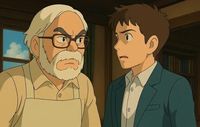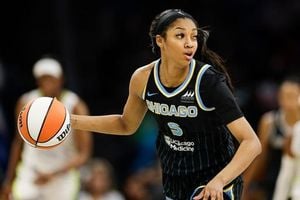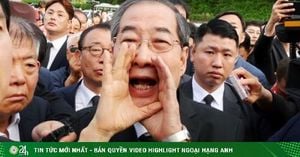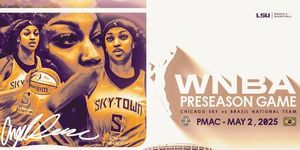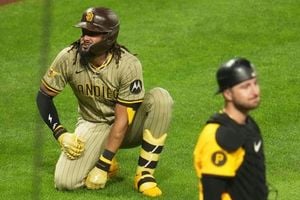In recent days, social media, especially X (formerly Twitter), has been taken over by a new trend: creating images in the style of Studio Ghibli using ChatGPT. This movement has captivated users who are eager to recreate personal photos, historical moments, and memes inspired by the beloved animations of the renowned Japanese studio, known for films like Spirited Away (2001) and Princess Mononoke (1997).
The excitement surrounding this trend was fueled by the launch of the updated GPT-4o image generation model on March 25, 2025. This significant upgrade allowed users to generate illustrations directly on the platform, eliminating the need for complex software like Photoshop or Illustrator. According to Sam Altman, CEO of OpenAI, the new feature was a game-changer: "Today we are launching something new… Images in ChatGPT!" This innovation leverages OpenAI's DALL-E system to create detailed visuals from textual descriptions, effectively democratizing the art of illustration.
Users quickly discovered that by describing scenes with specific details—such as soft lighting, lush landscapes, and delicately drawn characters—they could achieve results reminiscent of Studio Ghibli's signature style. While there isn't an official "Studio Ghibli" mode, creative prompts like "Generate in the style of Studio Ghibli" have yielded impressive outcomes. However, as the trend gained momentum, the demand for image generation skyrocketed, leading to technical difficulties for ChatGPT.
Consequently, Altman reported that the overwhelming interest forced OpenAI to temporarily limit image generation capabilities. In a candid post on X, he acknowledged the situation, stating, "The demand for images in ChatGPT is much higher than we anticipated (and we had high expectations)." This limitation sparked a wave of frustration among users eager to explore their creativity.
In light of these restrictions, many users sought alternatives for generating images in the Studio Ghibli style. Platforms such as Deep Dream Generator and Midjourney, both paid services, emerged as options, while free alternatives like getimg.ai, Grok, Gemini, and indsMid also gained traction. Grok, in particular, became a popular choice due to its integration with X, allowing users to easily create visuals without the constraints faced on ChatGPT.
Despite the initial block on generating Ghibli-style images, OpenAI later reversed its decision, allowing users once again to produce illustrations inspired by the iconic studio. However, the rapid rise of the "Ghibli effect" raised concerns about copyright issues, particularly regarding the rights of artists like Hayao Miyazaki, co-founder of Studio Ghibli. In the past, Miyazaki has been vocal about his skepticism towards the use of AI in animation, stating, "I would never have the idea of integrating this technology into my work. Honestly, I think it is an insult to life itself," during an interview with Japanese public broadcaster NHK.
This sentiment reflects broader concerns in the creative community regarding the ethical implications of using AI-generated content, particularly when it comes to mimicking the styles of living artists. A spokesperson for OpenAI clarified that while the company allows for the creation of images inspired by a studio's style, it avoids generating content that specifically imitates living artists. "We aim to offer users as much creative freedom as possible," the spokesperson added.
The trend has not only taken social media by storm but has also led to a surge in creative experimentation. Users have taken to transforming their portraits, depicting pets, and even imagining historical events through the lens of Studio Ghibli's whimsical aesthetic. However, the phenomenon quickly spiraled out of control, with some users creating images of sensitive subjects, such as the Twin Towers on September 11 and the assassination of JFK, all rendered in the distinctive Ghibli style.
In response to the chaos, Altman humorously questioned on X whether users could "relax when generating images," as the demand had reached an unprecedented level. The debate surrounding copyright and artistic integrity continues to unfold, with many in the industry calling for clearer guidelines on the use of AI in creative fields.
As the trend evolves, it remains to be seen how companies like OpenAI will navigate the complex landscape of copyright law and user creativity. For now, the allure of generating Studio Ghibli-inspired images remains strong, with many eager to explore the possibilities offered by AI.
With the tools available, producing illustrations in the style of Ghibli (and many other styles) has become more accessible and practical, giving users the freedom to explore new forms of visual expression. As the conversation around AI and creativity continues, it is clear that the intersection of technology and art will remain a hot topic for the foreseeable future.
